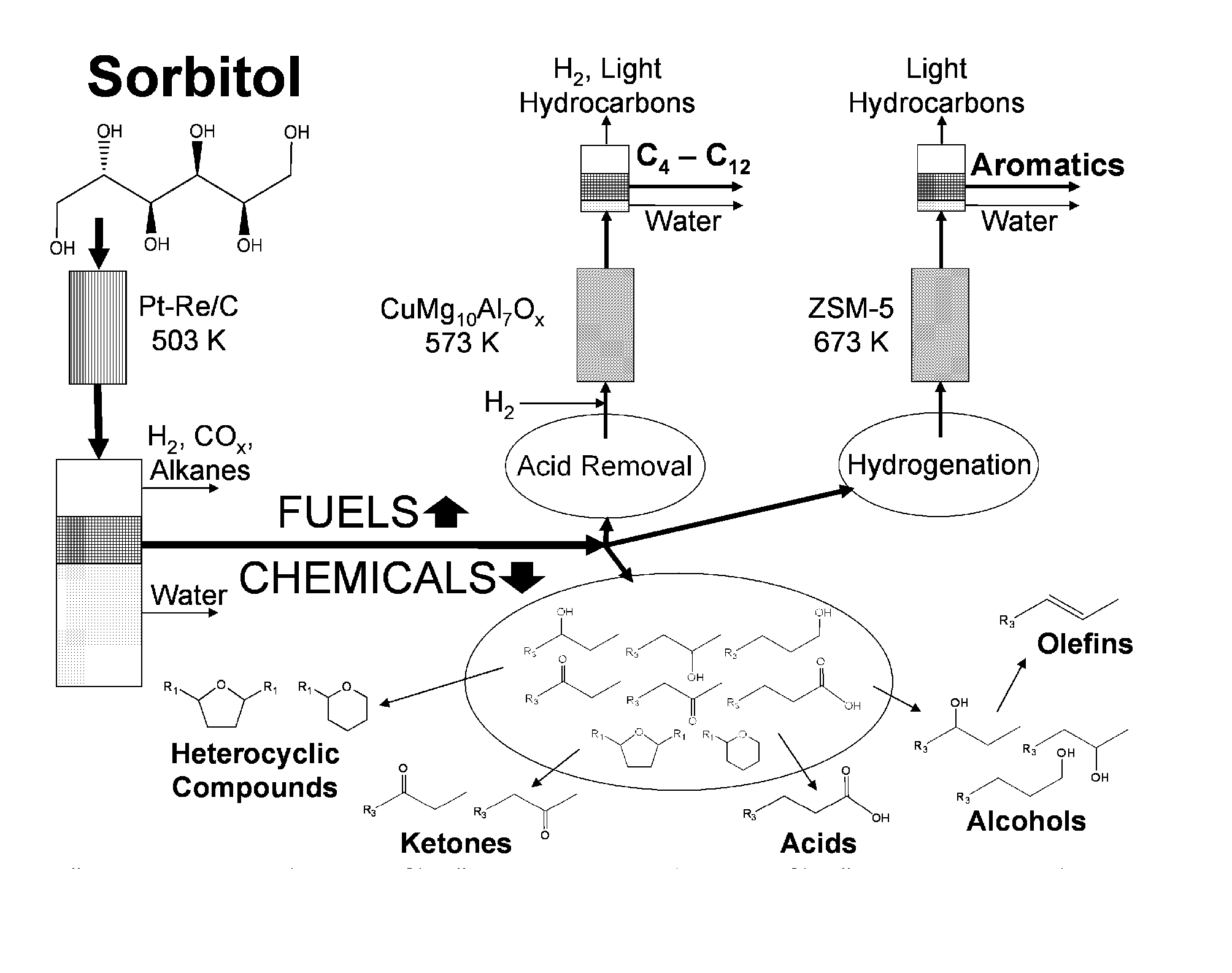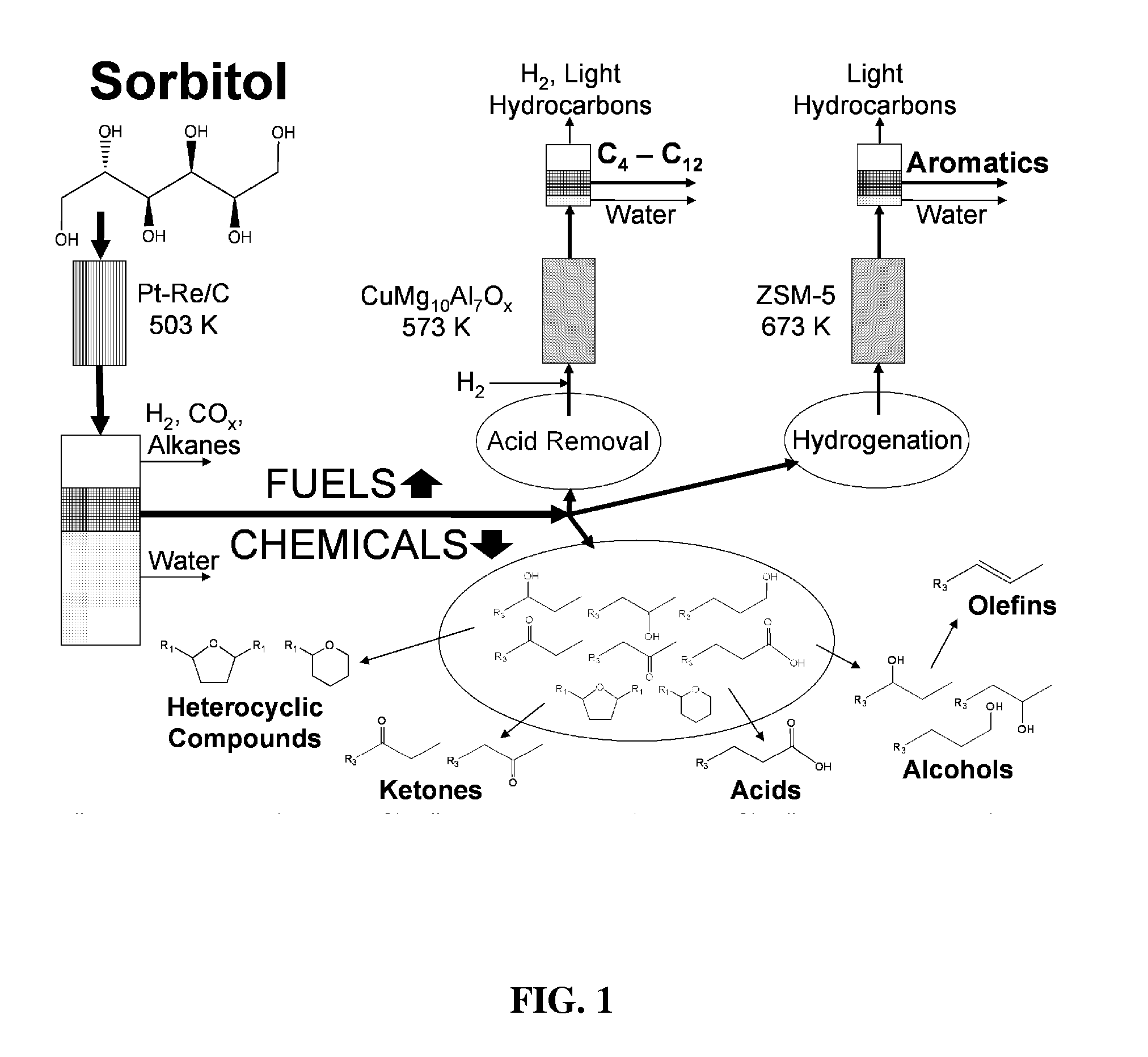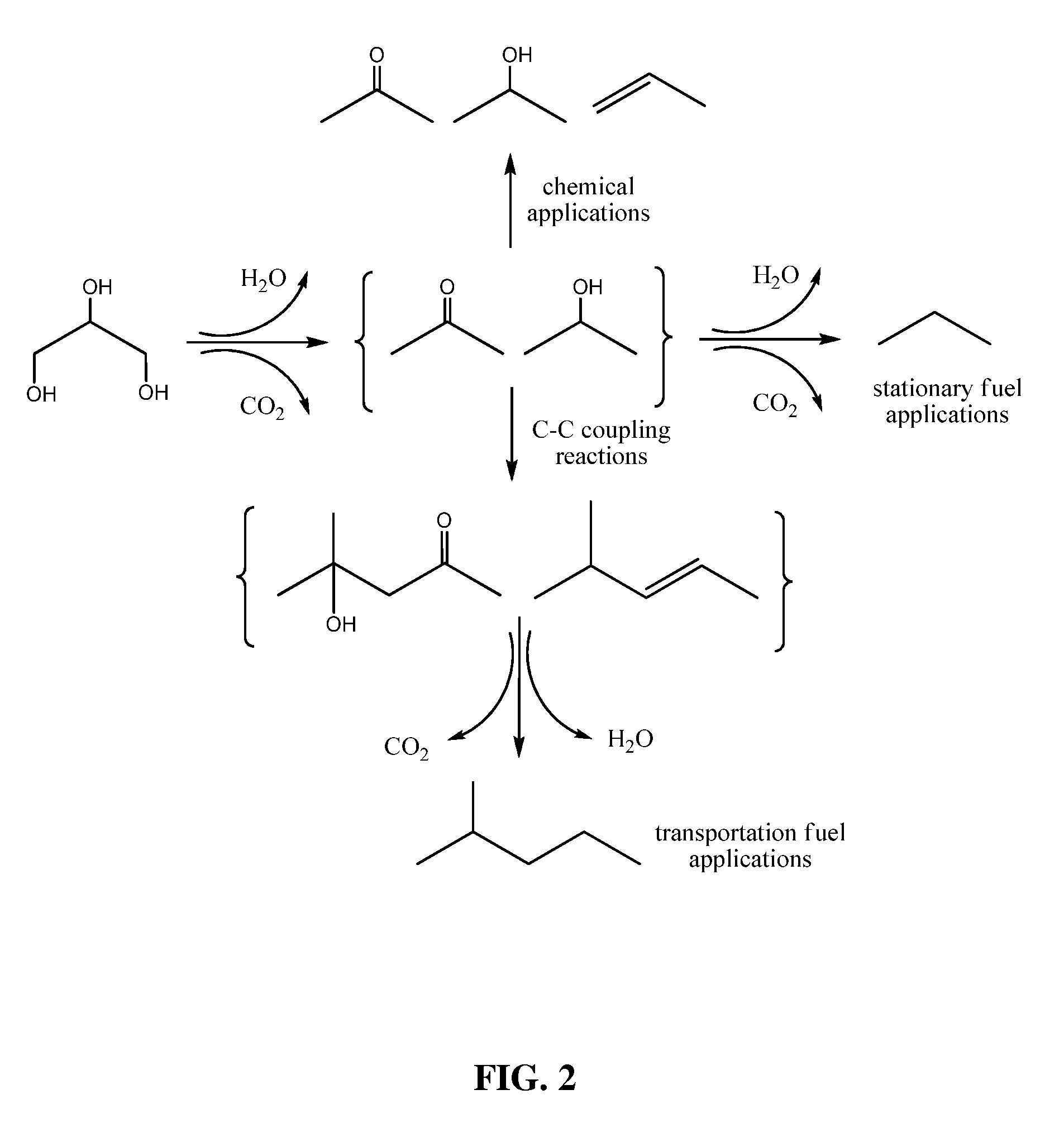Single-reactor process for producing liquid-phase organic compounds from biomass
a single-reactor, organic compound technology, applied in the direction of physical/chemical process catalysts, hydrocarbon oil treatment products, metal/metal-oxide/metal-hydroxide catalysts, etc., can solve the problem of co2 emission, non-renewable resource petroleum, and inability to meet the cost of transportation fuels produced from ligno-cellulosic biomass, etc. problem, to achieve the effect of reducing the cost of petroleum fuels, reducing the cost of fuel
- Summary
- Abstract
- Description
- Claims
- Application Information
AI Technical Summary
Benefits of technology
Problems solved by technology
Method used
Image
Examples
Embodiment Construction
[0034]The following abbreviations and definitions are used throughout the specification and claims. Claims not explicitly defined herein are to be given their accepted definitions within the field of chemistry and / or chemical engineering.
[0035]“Alkane / alkyl”=linear, branched, or cyclic, saturated hydrocarbons, preferably having from 1 to 24 carbon atoms. “Lower alkane / alkyl,” generally refers to alkanes having from 1 to 4 carbon atoms.
[0036]“Alkene / alkenyl”=linear, branched, or cyclic, unsaturated hydrocarbons (including aromatic hydrocarbons), preferably having from 2 to 24 carbon atoms.
[0037]“Biomass”=any organic matter available on a renewable basis. As used herein,
[0038]“biomass” explicitly includes (without limitation) forest and mill residues, agricultural crops and wastes, wood and wood wastes, grasses, non-crop plant matter, animal wastes, livestock operation residues, aquatic plants, trees and plants, and municipal and industrial wastes.
[0039]“Biomass-derived”=compounds or ...
PUM
| Property | Measurement | Unit |
|---|---|---|
| pressure | aaaaa | aaaaa |
| temperatures | aaaaa | aaaaa |
| pressure | aaaaa | aaaaa |
Abstract
Description
Claims
Application Information
 Login to View More
Login to View More - R&D
- Intellectual Property
- Life Sciences
- Materials
- Tech Scout
- Unparalleled Data Quality
- Higher Quality Content
- 60% Fewer Hallucinations
Browse by: Latest US Patents, China's latest patents, Technical Efficacy Thesaurus, Application Domain, Technology Topic, Popular Technical Reports.
© 2025 PatSnap. All rights reserved.Legal|Privacy policy|Modern Slavery Act Transparency Statement|Sitemap|About US| Contact US: help@patsnap.com



